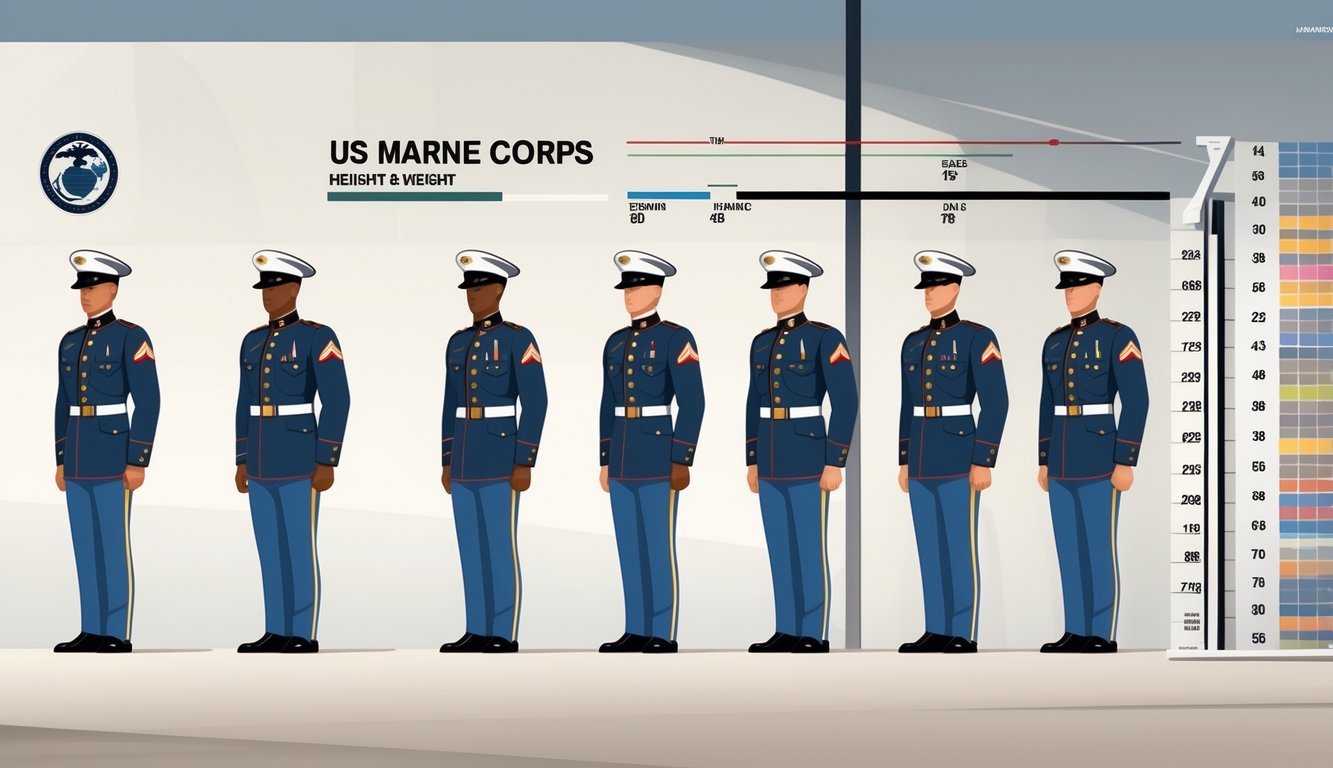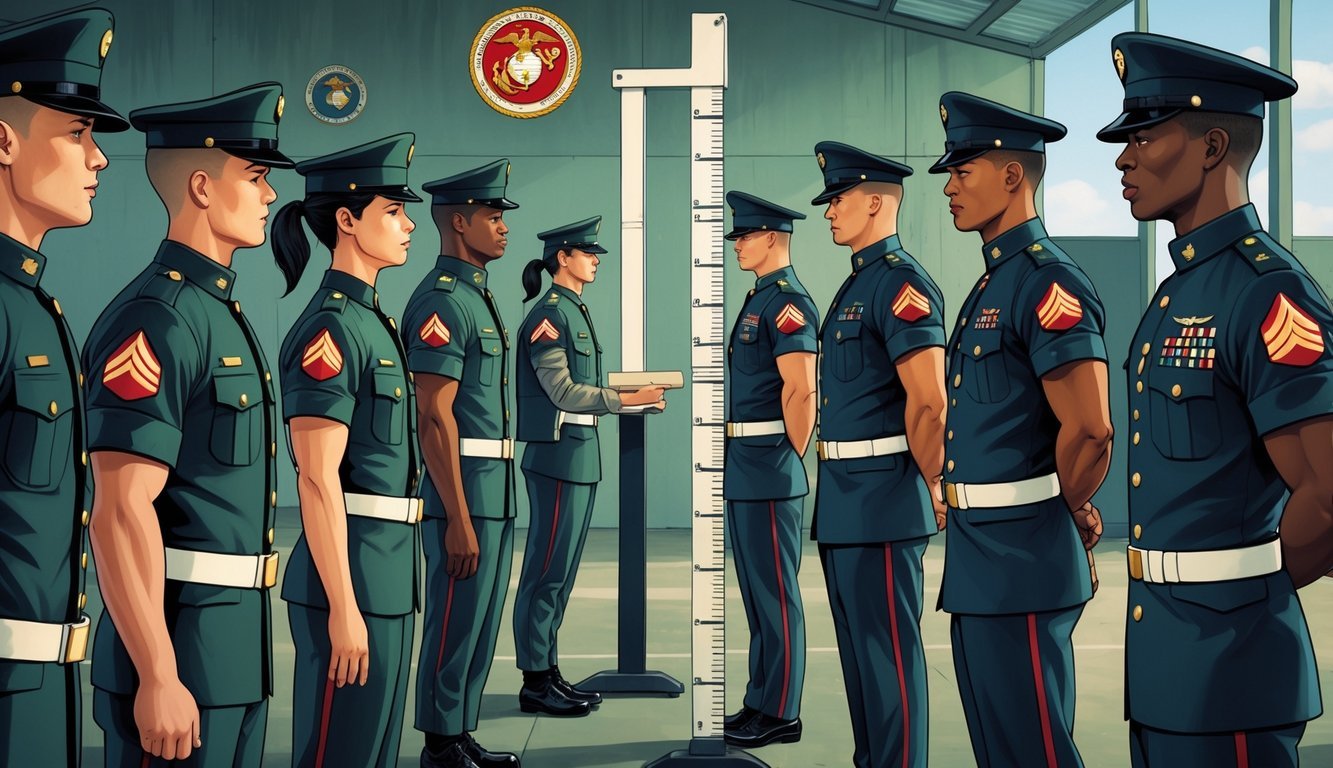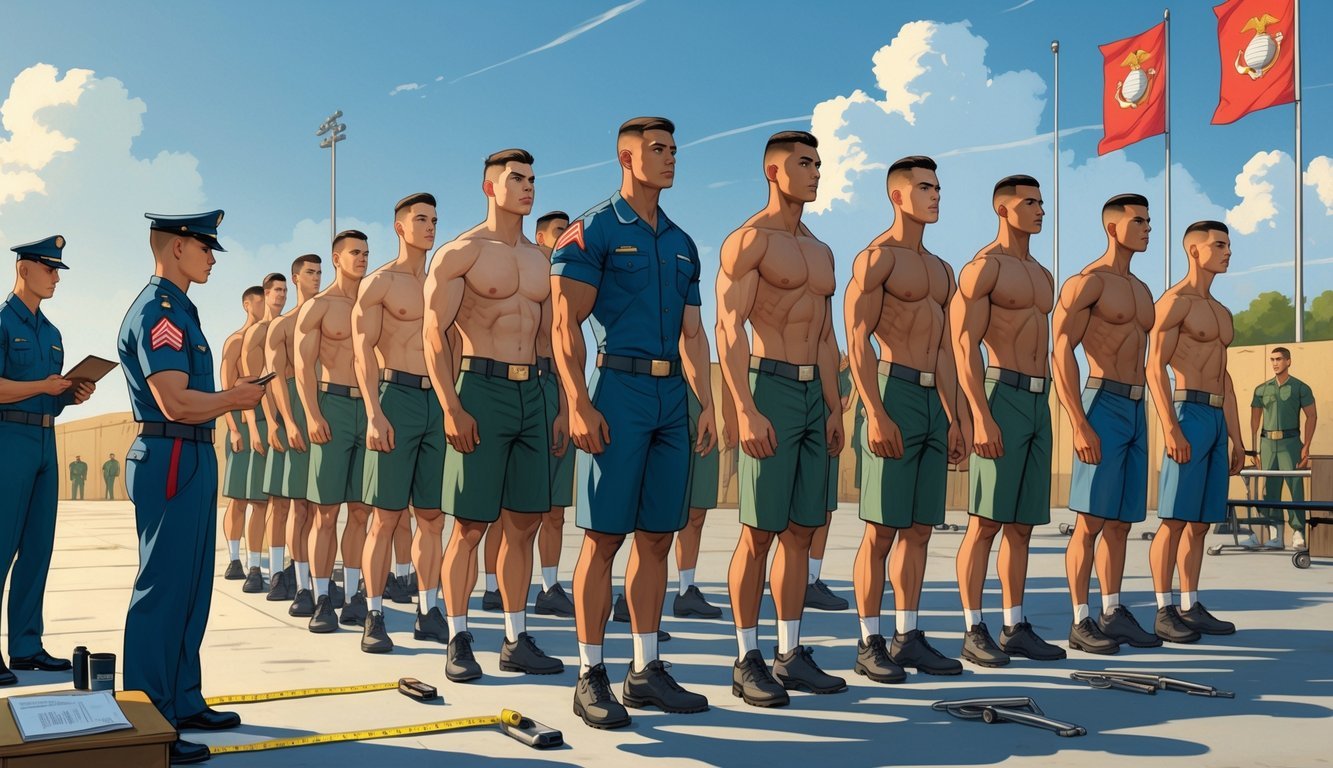PsychNewsDaily Publishers
100 Summit Drive
Burlington, MA, 01803
Telephone: (320) 349-2484
PsychNewsDaily Publishers
100 Summit Drive
Burlington, MA, 01803
Telephone: (320) 349-2484
The U.S. Marine Corps enforces strict height and weight standards to ensure all recruits meet physical fitness requirements essential for military readiness and operational effectiveness.

The U.S. Marine Corps lays out straightforward height and weight standards for everyone. These standards exist because Marines need to stay fit and ready for whatever comes their way.
They make sure every Marine can handle the tough stuff that comes with defending the country. When you join, someone will check your height and weight to see if you’re within a healthy range.
If you’re outside those limits, they’ll test your body fat percentage, which also has its own set of rules depending on your age and gender.
Sticking to these limits shows the Marine Corps that you care about physical fitness and that you’re serious about being ready.
It’s smart to know these standards before you sign up—or even if you’re just curious about how the Marines stay strong.
The process might feel strict, but honestly, it’s there to help you stay healthy and perform well.

The Marine Corps sets clear height and weight rules for everyone.
They want you to stay healthy and up for the demands of military life.
Your age, gender, and even your job in the Corps play a role in these standards.
To join, you have to meet specific height and weight benchmarks.
For men, the shortest you can be is 5 feet 0 inches.
There’s a max height too—usually not more than about 6 feet 6 inches for guys, though it can vary a bit by age.
Women have similar height rules, just adjusted for age.
You’ll need to pass a physical exam, and that includes a weigh-in.
These rules make sure you’re healthy enough to get through training and serve as a Marine.
If you don’t make the cut, you might have to wait or work on your fitness before you can start.
Your weight limit depends on your height, age, and gender.
For example, if you’re a male Marine at 5’8”, you’re usually expected to weigh somewhere between 136 and 184 pounds.
Female Marines have their own chart with different numbers for each height and age.
As you get older, the standards shift a bit to account for normal changes in your body.
So, the allowed weight range can go up slightly with age.
The Department of Defense sets these numbers to help you stay healthy throughout your career.
If you’re over the weight limit, the Marines will check your body fat percentage.
For guys aged 17-20, you can have up to about 18% body fat.
Women get a little more leeway, with limits usually around 26% to 30%.
They use tape to measure your neck, waist, and hips.
These measurements help figure out if your extra weight is muscle or fat.
The Body Composition and Military Appearance Program (BCMAP) keeps you on track and also looks out for unhealthy habits.
Meeting these standards shows you’ve got discipline and honor—qualities every Marine should have.

Marine Corps height and weight standards really shape your training and career.
These rules don’t just affect your physical performance—they also influence the whole Corps, even when you compare it to reserves or other countries’ forces.
You need to stay within those height and weight numbers to pass Marine fitness tests.
These tests include pushups, pullups, and running.
If you go over the limits, you’ll end up in the Body Composition Program (BCP), which focuses on getting you healthier.
Falling short of the standards can bring on extra training, closer supervision, and it might even slow down your promotions.
The focus on fitness and how you look isn’t just for show—it really helps with mission readiness and keeps morale up in your unit.
Height and weight rules affect how the Marines find and keep talent.
The policies might seem strict, but if you meet the body fat standards, there’s a little wiggle room even if your weight is above the chart.
The Corps tries to keep everyone physically ready but also values diversity in age, gender, and background.
This approach lets you work with Marines who have all sorts of skills, whether you have a GED or something else.
They even consider your family life and mental health, since healthy Marines tend to stick around longer and do better.
Marine standards aren’t quite the same as those in the Navy or Air Force.
If you’re in the Reserves, you might notice a bit more flexibility with weight limits, but you’ll still need to pass fitness tests and look the part.
Compared to allied countries, the Marines usually have stricter height and weight rules.
These standards also affect how your uniform fits and what’s expected when it comes to appearance.
Knowing these differences helps you stay on top of things, no matter your role.

You probably want to know about height and weight limits, how body fat gets measured, and what’s expected based on age or gender.
Here’s a quick rundown of the most common questions.
Height and weight rules change with age and gender.
Most guys need to be between 58 and 78 inches tall.
Weight depends on your height, usually falling somewhere from 120 to 300 pounds.
If you’re outside those numbers, they’ll check your body fat.
Women need to be between about 58 and 78 inches tall.
Their weight standards shift with height and age, usually ranging from 100 to 225 pounds.
If you’re above the weight limit, you’ll get a body fat test to see if you still qualify.
They use a tape test—measuring your neck, waist, and (for women) hips.
This helps them figure out if your body fat percentage fits Marine Corps guidelines.
If you’re shorter than 58 inches or taller than 78 inches, you probably can’t enlist.
These limits make sure you’re physically able to handle Marine duties.
The chart shows the highest allowed body fat percentages for your age and gender.
For example, males aged 17-20 can have up to 18% body fat, while older Marines get a bit more wiggle room.
Yes, there are. Men and women follow different body fat limits, and women usually get a bit more leeway.
Older Marines can also have higher body fat limits than younger ones. The standards try to keep every Marine fit, but they do take age and gender into account.